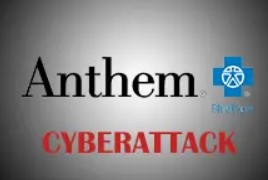The Relevance of Mobile App Development for Businesses
Mobile app development is more relevant and important than ever for businesses of all sizes in the current digital era. Our daily lives and how we engage with the world around us have been completely transformed by the introduction of smartphones and the explosive expansion of mobile technology. Mobile applications have permeated every aspect of our everyday life, from productivity and shopping to communication and pleasure.
Let’s explore the significance of application development for businesses, the specialists required for developing mobile applications, the typical cost of hiring such specialists, where to find a mobile app development team, what factors to take into account when choosing them, the potential for outsourcing application to a development team, and the benefits of outsourcing.
Why is App Development Important for Business?
For businesses, the creation of mobile apps offers a variety of advantages and opportunities that help them grow their consumer bases and remain competitive. A survey conducted by Clutch revealed that 42% of small businesses already have a mobile app, while 30% are planning to build one in the future, indicating the growing adoption of app development teams across various industries. For the following reasons, developing apps is essential for businesses:
A well-designed mobile app enables businesses to interact and engage with their consumers more personally.
- Increased Customer Engagement. Apps may greatly increase consumer engagement and loyalty by offering useful features, smooth user experiences, and tailored content.
- Increased Brand Visibility: Creating a mobile app gives companies a dedicated platform to promote their goods, services, and brand identity. The user’s smartphone now has the app icon, which acts as a continual reminder of the brand, boosting exposure and brand familiarity.
- Improved Customer help: By providing features like chatbots, in-app messaging, and self-help choices, mobile applications may simplify and enhance customer service. These features allow organizations to help customers quickly and effectively, enhancing their pleasure and loyalty.
- Increased Sales and income: Customers may make purchases using mobile applications in a simple and secure manner, increasing sales and income streams for enterprises. Additional incentives for clients and repeat business can be provided through in-app purchases, mobile payments, and loyalty programs.
- Competitive Advantage: Having a mobile app may provide firms a competitive edge in today’s congested industry. It demonstrates an innovative mindset, a dedication to satisfying client demands, and a forward-thinking attitude. A well-made, feature-rich app may draw in new users and set a company apart from its rivals.
Specialists Needed for Mobile Application Development and Average Cost of Hiring
Source: Sigmund. Unsplash
A group of qualified experts with a range of specialties is needed to develop a mobile app. Following are some of the major positions in mobile app development team and their respective typical salaries:
- Project manager: Plans and organizes the development team, oversees the whole app development process. A project manager typically costs between $60,000 and $100,000 per year to hire.
- UI/UX Designer: Develops user-friendly and aesthetically pleasing interfaces. The typical annual salary for a UI/UX designer in a good development team is between $40,000 and $90,000.
- Writes the code and creates the software for particular platforms (such as iOS, Android, etc.). Depending on experience and competence, hiring a mobile app developer might cost anywhere between $50,000 and $120,000 annually.
- Quality Assurance (QA) Tester: Verifies that the program runs without hiccups and finds any defects or problems. A QA tester typically costs between $40,000 and $80,000 per year to hire.
Advertisement
[widget id=”custom_html-68″]
Where to Look for Specialists and What to Consider When Selecting Them
There are several options to consider while looking for experts in mobile app development. Here are a few possibilities:
- In-House Hiring: By advertising job vacancies on appropriate sites, holding interviews, and evaluating candidates’ credentials and experience, you may hire specialists directly.
- Independent contractors and freelancers: Websites like Upwork, Freelancer, and Toptal give users access to a large pool of qualified experts who may work on a project-by-project basis.
- Business Networks:
Leveraging professional networks may be quite helpful when trying to identify experts for mobile app development team. When choosing professionals, keep the following things in mind:
– Look for appropriate experience: Verify that the professionals you are considering have expertise creating mobile applications and have the abilities required for your particular project needs.
– Examine portfolios and references: Look into their prior work and contact references or clients for testimonials. You may learn more about the caliber of their work and their capacity for success from this.
– Evaluate your teamwork and communication abilities. Successful app development depends on strong teamwork and communication. Look for experts that can clearly convey ideas, comprehend your vision, and function well in a development team.
– Technical proficiency: Examine the specialists’ technical proficiency by gauging their familiarity with the frameworks, programming languages, and tools used in the creation of mobile apps.
– Cultural fit: Take into account how well the professionals fit into your company’s culture. A more efficient development process may be achieved by creating a good working connection and adhering to the ideals of your firm.
Outsourcing Application Development and the Advantages of Outsourcing
Businesses also have the option to outsource their application development in addition to recruiting professionals inside. There are a number of advantages to outsourcing, including:
- Cost-effectiveness: Compared to recruiting an internal workforce, outsourcing is frequently more affordable. It does away with the need for office space, equipment, perks, and recruitment expenditures. You may also benefit from the experience of experts from nations with reduced labor expenses through outsourcing.
- Gaining access to specialized skills: By outsourcing, you may tap into a vast talent pool. Making sure you discover the best experts for your project, you may pick from a large choice of specialists with a variety of skill sets and knowledge.
- Outsourcing saves you time by letting professionals handle the development process while you concentrate on your main company operations. Time is saved, and the job may be finished more quickly.
- Scalability and flexibility: Outsourcing allows you to manage your app development demands with scalability and flexibility. The development team size may be readily increased or decreased to meet project objectives, guaranteeing efficient resource use.
- Shorter time to market: Outsourcing can hasten the design phase. Your software may be released more quickly and you’ll have an advantage over competitors if you have a committed staff working on it.
Conclusion
In today’s digital environment, the success of enterprises depends greatly on mobile app development. It provides better brand recognition, better customer service, higher sales and income, and a competitive edge. It also increases customer engagement. It’s crucial to select the best professionals, taking into account their credentials, experience, and cultural fit, in order to create a successful mobile app. Specialists can be found through internal employment, independent contractors, and business networks. As an alternative, contracting out the development of apps offers cost efficiency, access to specialized expertise, time savings, scalability, and a quicker time to market.
Businesses may use the power of mobile technology to propel growth and success by recognizing the importance of mobile app development and making smart choices regarding expertise and outsourcing.





